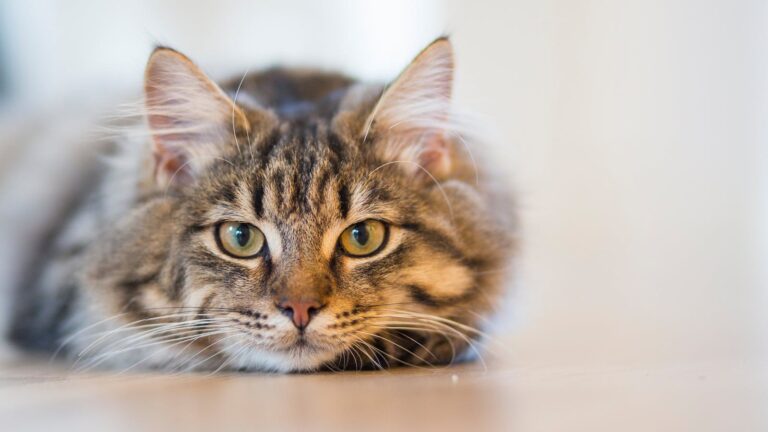Do Cats Get Lonely? How to Keep Them Company
When it comes to our beloved feline friends, many of us wonder: Do Cats Get Lonely? How to Keep Them Company is a question that arises often among cat owners. While cats are often perceived as solitary creatures, they also have social needs and can experience feelings of loneliness. Understanding these emotional aspects is essential for ensuring our pets lead happy and fulfilling lives. This article delves into the intricacies of feline social behavior, providing insights on how to keep your cat engaged and content in their environment.
Understanding Feline Social Needs: Do Cats Experience Loneliness?
Cats are often stereotyped as independent animals that thrive on solitude. However, this perception underestimates their social needs and complexities. Just like humans, cats can experience a range of emotions, including loneliness. While individual personalities vary, many cats crave interaction with their owners and other pets.
The Nature of Felines
Cats are descended from social hunters, which means that while they may not be pack animals like dogs, they still possess an innate desire for companionship. In the wild, cats communicate through vocalizations, body language, and scent marking. Domestic cats have retained many of these instincts, seeking out connections with both humans and fellow cats.
The Emotional Spectrum of Cats
It’s important to recognize that cats do feel emotions, and they can become bored, anxious, or sad without sufficient stimulation or companionship. Signs of emotional distress in cats can manifest in various ways, including changes in appetite, behavior, and grooming habits. Understanding this emotional spectrum allows cat owners to better support their feline companions.
The Importance of Socialization
Socialization plays a crucial role in a cat’s overall well-being. Kittens especially benefit from interactions with humans and other animals during their early developmental stages. Cats that miss this critical period may become more reserved or fearful as adults. To prevent loneliness, it’s essential to provide opportunities for social interaction throughout their lives.
Recognizing the Signs of Loneliness in Your Cat: Behavioral Clues to Watch For
Identifying signs of loneliness in your cat can be challenging, but there are several behavioral clues that can indicate your feline friend is feeling isolated. By observing these behaviors, you can implement solutions to enhance their emotional well-being.
Changes in Behavior
A noticeable change in your cat’s behavior can be one of the first signs of loneliness. If your usually playful cat suddenly becomes withdrawn or disinterested in activities, it might be time to assess their emotional state. Increased hiding, decreased purring, or a lack of enthusiasm for playtime can signify that your cat feels lonely.
Excessive Vocalization
While some cats are naturally more talkative than others, excessive vocalization can indicate distress. If your cat starts meowing or yowling more than usual, they may be expressing their need for companionship. In such cases, it’s essential to engage with them more frequently to alleviate their feelings of isolation.
Aggression or Anxiety
In some cases, loneliness can lead to behavioral issues such as aggression or anxiety. A cat that feels lonely may lash out at people or other animals, showcasing irritability. Alternatively, they may display signs of anxiety, such as pacing, hiding, or excessive grooming. Recognizing these behaviors early on can help address the underlying issue of loneliness.
Physical Health Deterioration
Loneliness can also impact a cat’s physical health. Weight loss, changes in eating habits, or increased lethargy can all point to emotional distress. Regular veterinary check-ups are essential, but if you notice any of these signs alongside emotional indicators, consider focusing on improving your cat’s social interactions and environment.
| Behavioral Signs of Loneliness | Description |
|---|---|
| Withdrawal | Reduced interaction with family members and toys. |
| Excessive vocalization | Increased meowing, often indicating distress. |
| Aggression | Uncharacteristic biting or swatting. |
| Physical health issues | Weight loss or lethargy linked to emotional states. |
Environmental Enrichment: Creating a Stimulating Home for Solitary Cats
Creating an enriching environment is vital for keeping your cat emotionally and physically healthy. A stimulating home allows cats to explore, play, and engage their senses, reducing their feelings of loneliness.
Interactive Toys and Games
Investing in interactive toys can significantly enhance your cat’s quality of life. Toys that mimic prey, such as feather wands or laser pointers, stimulate their natural hunting instincts. Schedule regular play sessions to encourage bonding and reduce boredom.
Vertical Space and Perches
Cats are natural climbers and love to observe their surroundings from high vantage points. Providing cat trees, shelves, or window perches allows them to explore their vertical territory and enjoy watching the world outside. This form of enrichment can alleviate feelings of loneliness by giving them a sense of ownership over their space.
Sensory Experiences
Engaging a cat’s senses is another excellent way to combat loneliness. Consider using puzzles filled with treats, scented toys, or even cat grass to enrich their environment. These sensory experiences stimulate their minds and can make alone time feel less isolating.
Safe Outdoor Access
If possible, providing safe access to outdoor spaces can greatly enhance your cat’s life. Outdoor enclosures or leash training are great options for allowing your cat to experience nature while remaining safe. Fresh air and new sights can distract them from loneliness and stimulate their curiosity.
The Companion Question: Should You Get Your Cat a Friend?
One common solution to preventing loneliness in cats is introducing a companion. However, this decision merits careful consideration, as not all cats will appreciate or adapt well to a new friend.
Assessing Your Cat’s Personality
Before bringing another animal into your home, evaluate your current cat’s personality. Some cats thrive in multi-pet households, while others prefer being the sole pet. Observing how your cat interacts with other animals can provide insight into whether they would benefit from a companion.
Choosing the Right Match
If you decide to introduce another cat, selecting a compatible personality is crucial. Consider adopting a young, playful kitten for an older cat, or choose a calm adult cat for a more active feline. Introducing them properly is key—slowly and carefully to ensure a positive relationship develops.
Gradual Introduction Process
When introducing a new cat, take a gradual approach. Start by allowing them to sniff each other’s belongings before arranging supervised meetings. Pay attention to their body language during these interactions, and give them time to adjust to one another.
Potential Downsides
While having a companion can reduce loneliness, it’s not a guaranteed solution. Two cats may not always get along, leading to stress for both animals. It’s essential to monitor their interactions and be prepared to separate them if conflicts arise.
Playtime and Interaction: Fostering Connection with Your Feline Companion
Regular playtime and interaction with your cat are essential components of a fulfilling relationship. Engaging with your feline friend helps foster connection, alleviating feelings of loneliness.
Daily Play Sessions
Establishing a routine of daily play sessions is a fantastic way to bond with your cat. Use a variety of toys to keep things fresh and exciting. Structured playtime not only provides exercise but also reinforces the human-animal bond.
Training and Tricks
Training your cat to respond to commands or learn tricks can be invigorating for both of you. Using positive reinforcement encourages mental stimulation and offers a rewarding way to connect. Teaching your cat new skills can boost their confidence and reduce feelings of isolation.
Quality Time
Spending quality time together, even outside of play sessions, can make a significant difference in your cat’s emotional state. Cuddling, brushing, or simply sitting together can strengthen your bond and remind your cat that they are not alone.
Creating a Routine
Cats thrive on routine, and establishing regular times for feeding, play, and quiet moments can contribute to their emotional stability. Knowing when to expect interaction can help ease feelings of loneliness and create a sense of security.
Beyond Companionship: Addressing Underlying Causes of Isolation in Cats
Understanding that loneliness can stem from various factors is essential for addressing your cat’s emotional needs effectively. Sometimes, the problem is not simply a lack of companionship but rather an underlying issue contributing to their feelings of isolation.
Stressors in the Environment
Changes in the home environment, such as new family members, moving, or loud noises, can create stress for cats. Identifying potential stressors and minimizing their impact can help reduce feelings of loneliness. Providing a consistent routine and a safe space can go a long way in easing their anxiety.
Health Issues
Underlying health problems can also affect a cat’s behavior. Conditions such as arthritis, dental disease, or hormonal imbalances can lead to withdrawal and changes in temperament. Regular veterinary check-ups are essential to catching any potential health issues early.
Lack of Stimulation
Monotony can lead to boredom and loneliness. Ensure your cat has access to a variety of toys, scratching posts, and climbing structures to stimulate their natural instincts. An enriched environment can significantly improve your cat’s emotional and physical well-being.
Individual Differences
Every cat is unique, with varying social needs and preferences. While some may thrive with constant companionship, others may prefer solitude. Being attentive to your cat’s individual personality and responding to their specific needs is vital in fostering a happy and healthy feline life.
Conclusion
Understanding the emotional and social needs of cats is fundamental to providing a fulfilling life for our feline companions. By recognizing the signs of loneliness, creating an enriching environment, engaging in play, and considering the dynamics of companionship, cat owners can enhance their pets’ well-being. Ultimately, every cat is unique, and tuning into their specific needs will aid in building a strong and lasting bond, ensuring they remain happy and content in their homes.







